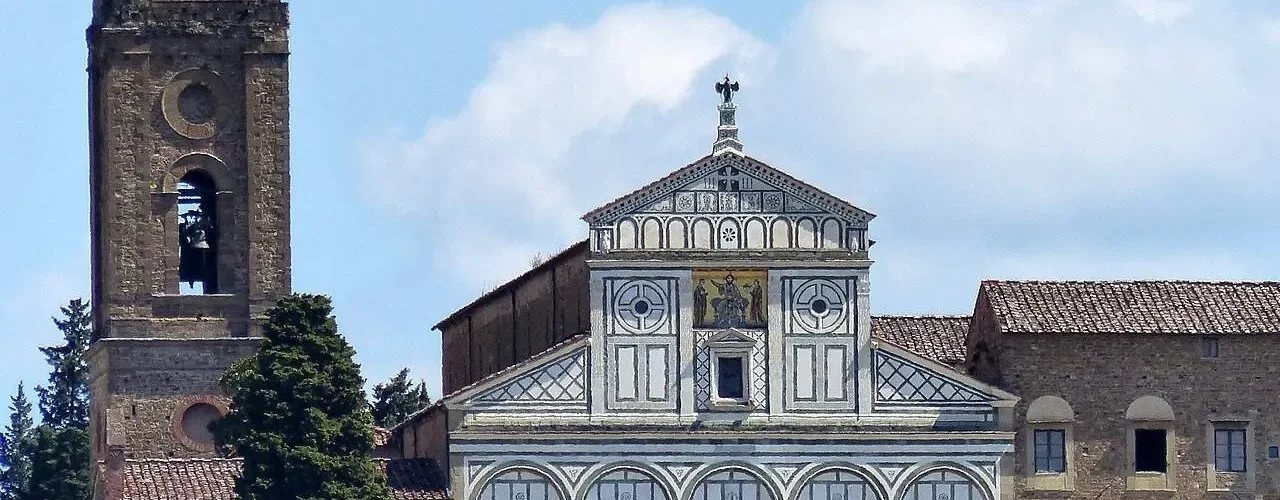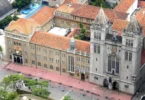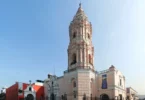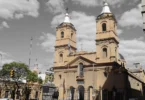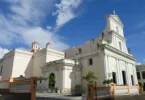Introduction
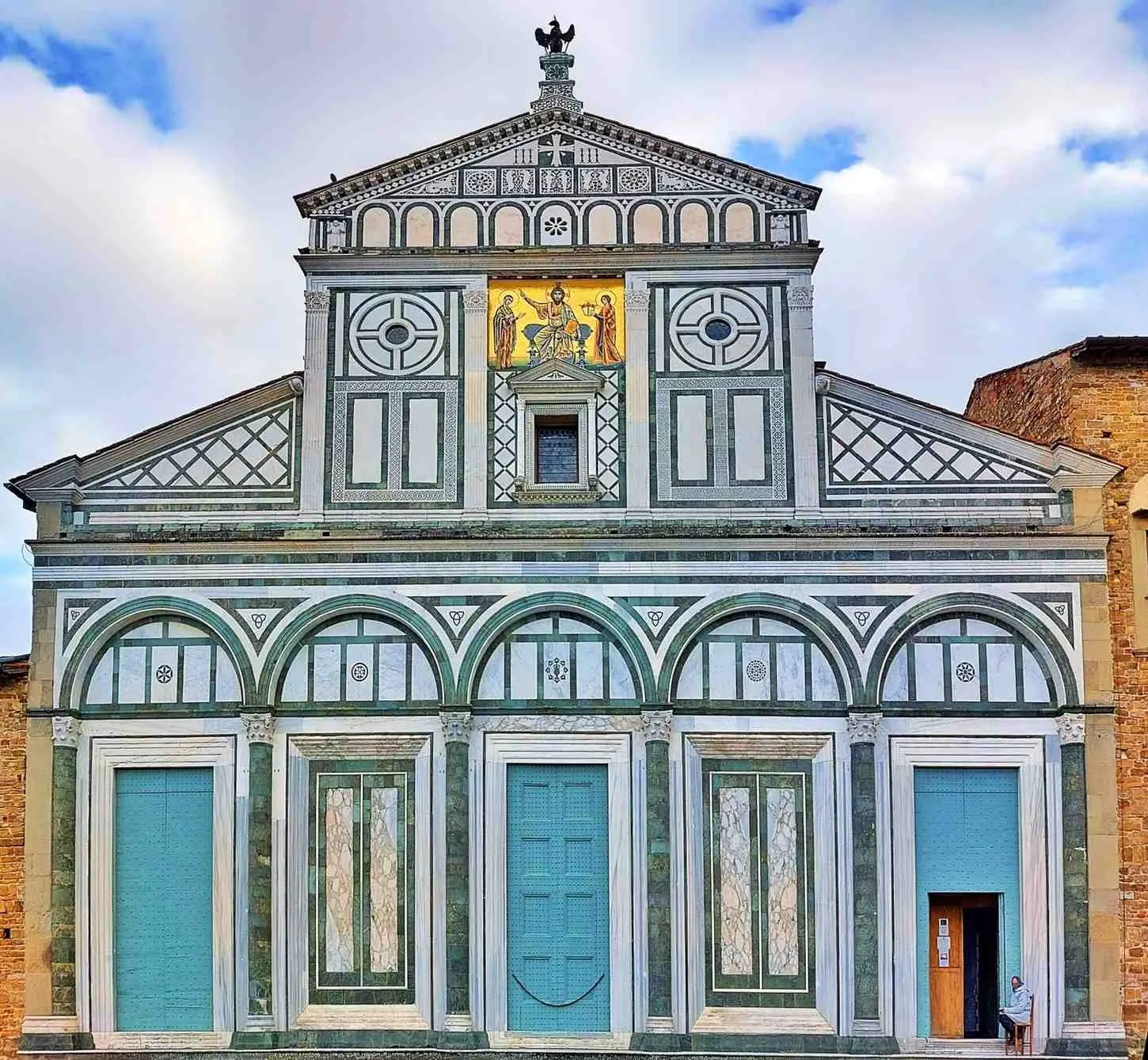
San Miniato al Monte, or St. Minias on the Mountain, is a renowned basilica located in Florence, Italy, perched atop one of the city’s highest hills. This historic church is celebrated as one of the finest examples of Romanesque architecture in Tuscany, admired not only for its architectural grandeur but also for its breathtaking location. The basilica offers sweeping panoramic views of Florence, making it one of the most scenic and picturesque churches in the entire country.
The church is dedicated to St. Minias, a Christian martyr, and has stood at this elevated site for centuries, symbolizing both spiritual devotion and an important landmark in the city. Its exterior is characterized by a striking façade, typical of Romanesque style, featuring intricate stonework, beautiful arches, and decorative elements that showcase the craftsmanship of the period.
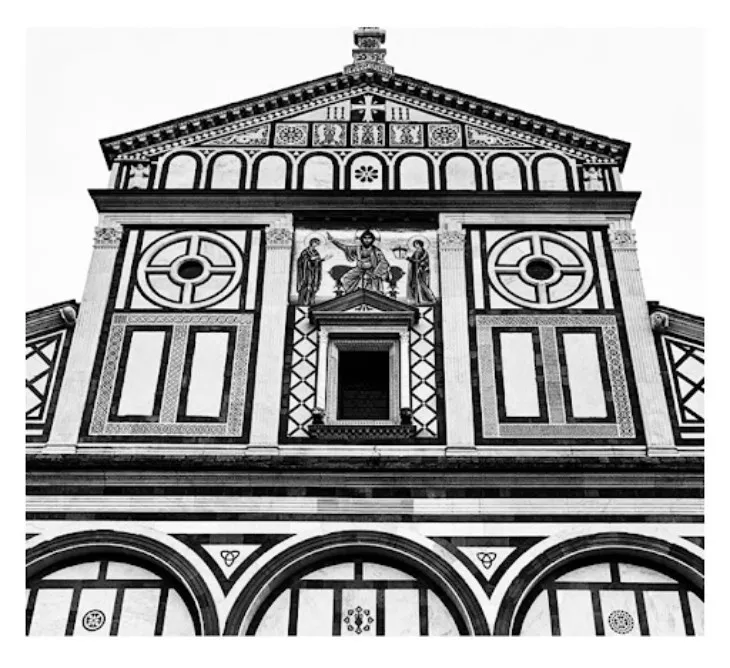
St. Miniato, otherwise called Minas (Armenian: Մինաս), was an Armenian aristocrat who filled in as a trooper in the Roman armed force under Head Decius. As the legend goes, Miniato went through a significant profound change and decided to embrace Christianity, at last turning into a recluse. His freshly discovered confidence, nonetheless, made him an objective for mistreatment. He was blamed for being a Christian and brought before Sovereign Decius, who was settled right external the doors of Florence.
The ruler, in his hatred for Christianity, condemned Miniato to a ruthless execution. He requested that Miniato be tossed into the amphitheater, where wild monsters were kept to engage the general population. A jaguar was explicitly decided to gobble up him, yet in a supernatural development, the panther would not hurt him, regardless of being released upon the saint.
Even with death, St. Miniato was eventually executed by the ruler. In any case, even in death, his story took on a quality of the supernatural: as per legend, after his beheading, he got his own cut off head and crossed the Arno Stream. He then, at that point, climbed the lofty slope known as Mons Fiorentinus, where he arrived at his withdrawal — a singular retreat he had once involved throughout everyday life.
This unprecedented demonstration of perseverance and confidence prompted the production of a position of love in his honor. The site of his suffering and wonderful post mortem excursion would turn into the area for the congregation of San Miniato al Monte, devoted to his memory.
The Foundation of the Congregation and Its Development
A safe-haven to St. Miniato is accepted to have existed at the site as soon as the eighth 100 years, filling in as a little spot of dedication. Nonetheless, the development of the current basilica started in 1013, under the direction of Abbot Alibrando. This obvious the start of the amazing Romanesque design that stands today.
The basilica was sanctified in 1030 by Ruler Henry II, further setting its significance in both the strict and political circles of Florence at that point. The building plan of the congregation is an exemplary illustration of Romanesque style, portrayed by its effortlessness, strength, and enormous extents. The congregation’s amazing façade and its refined inside have made it quite possibly of the best Romanesque design in Tuscany.
Connecting the basilica is a religious community that has gone through a few changes throughout the long term. At first, the cloister was established as a Benedictine people group, entrusted with keeping up with the profound existence of the site. The Benedictines were quick to lay out a devout presence here, supervising the improvement of the congregation and its encompassing region.
In the eleventh 100 years, the Cluniac Request assumed control over the religious community, proceeding with the custom of devout life and commitment. The Cluniacs were known for their severe adherence to the Standard of St. Benedict and their accentuation on ceremonial change.
Notwithstanding, in 1373, the Olivetan priests assumed responsibility for the religious community. This request, a part of the Benedictines, carried with them a reestablished feeling of direction and horticultural skill. Under their direction, the religious community thrived and became famous for its otherworldly importance as well as for its development of natural cures. The Olivetans started creating and selling honey, home grown teas, and normal combinations, which they actually produce today. These products are sold from a little shop situated close to the congregation, permitting guests to bring back home a piece of the cloister’s legacy.
Social and Otherworldly Heritage
San Miniato al Monte and its bordering cloister are strict tourist spots as well as images of Florence’s rich social and otherworldly history. The congregation’s raised situation on the slope offers all encompassing perspectives on the city, making it a well known objective for the two pioneers and sightseers. The staggering engineering, joined with the serene climate of the religious community, establishes a climate that is both scrutinizing and sensational.
The tradition of St. Miniato, from his phenomenal suffering to the getting through presence of his congregation, keeps on drawing in guests from around the world. His honest account, perseverance, and help from above is a focal piece of the historical backdrop of Florence and has helped make San Miniato al Monte quite possibly of the most respected and picturesque strict site in Italy.
Architecture of the Basilica of San Miniato al Monte Florence, Italy
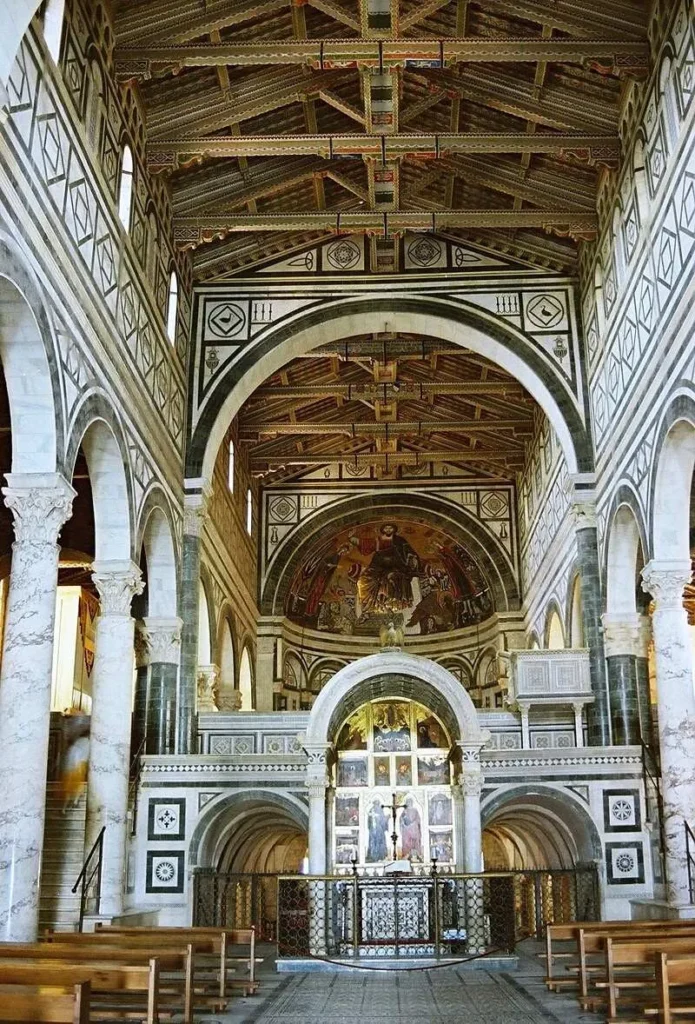
Architectural Style: Romanesque architecture
Burials : Minias, James of Portugal, Carlo Collodi
Interior Features of San Miniato al Monte
The interior of San Miniato al Monte preserves many of its early architectural elements and artistic treasures, offering visitors a glimpse into the Romanesque period. Despite various changes over the centuries, much of the church’s original design remains intact, contributing to its timeless beauty.
Choir and Crypt
One of the church’s most distinctive features is its raised choir, elevated on a platform above the crypt, creating a sense of spatial depth and division. This design element is one of the early characteristics of Romanesque architecture and remains largely unchanged since the church’s construction. Below the choir, the crypt is the oldest part of the basilica, adding to its historical significance.
The crypt is said to house the bones of St. Miniato, although there is some debate, with evidence suggesting the relics may have been removed to Metz before the church’s construction. Despite this, the crypt remains a sacred and revered space, with its frescoes by Taddeo Gaddi adorning the walls. These frescoes are a significant feature, depicting scenes from the lives of saints, and contribute to the sacred atmosphere of the space.
The Pavement and Cappella del Crocefisso
The floor of the church is another point of historical interest. The patterned pavement dates back to 1207, featuring intricate geometric designs in marble that are both visually striking and symbolic of the church’s Romanesque heritage.
The Cappella del Crocefisso (Chapel of the Crucifix) is one of the central features of the nave. Designed by Michelozzo in 1448, this beautiful freestanding chapel originally housed the miraculous crucifix that is now located in Santa Trìnita. The chapel is adorned with panels traditionally attributed to Agnolo Gaddi, a prominent 14th-century painter. Additionally, the terracotta decoration of the vault is the work of Luca della Robbia, whose signature style can be seen in the delicate and vibrant details of the vault’s ornamentation.
The High Altar and Apse Mosaic
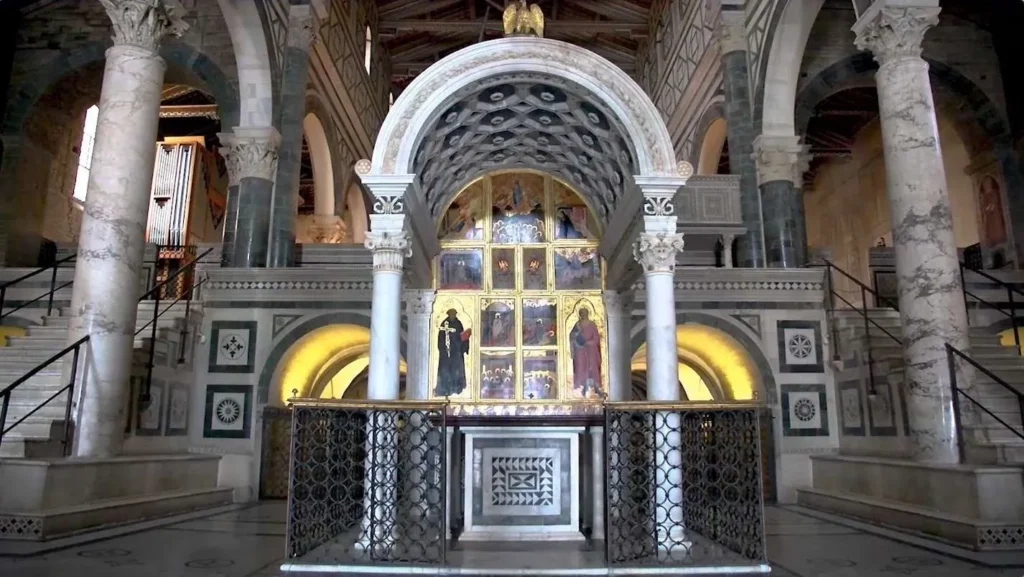
The high altar is a focal point of the basilica, and it is here that the relics of St. Miniato were once believed to be housed. The altar is richly decorated, and the crucifix above it is traditionally attributed to Luca della Robbia, another significant figure in Renaissance art.
The apse is dominated by a magnificent mosaic that dates to 1297. The mosaic depicts Christ between the Virgin Mary and St. Minias—a theme that is also represented on the church’s façade. The artistry of this mosaic is considered to be the work of an unknown artist, possibly the same creator responsible for the design of the façade, underscoring the consistent artistic vision that defines the church.
Romanesque Pulpit
The Romanesque pulpit and screen located in the raised choir and presbytery are significant examples of ecclesiastical craftsmanship from the 12th century. Both pieces were made in 1207 and contribute to the liturgical function and the overall aesthetic of the basilica. The pulpit, in particular, is noted for its intricate carvings and symbolic representations of biblical scenes.
The Sacristy and Spinello Aretino’s Frescoes
The sacristy of the church contains a spectacular fresco cycle depicting the Life of St. Benedict, created by the renowned artist Spinello Aretino in 1387. These frescoes are a highlight of the church’s artistic collection, showcasing scenes from St. Benedict’s life and his role in the development of monasticism. The vivid colors and dynamic compositions of these frescoes provide a striking contrast to the more restrained Romanesque features of the church, adding a late Gothic touch to the overall design.
Cardinal of Portugal Church
The Cappella del Cardinale del Portogallo to one side of the nave, “one of the most brilliant funerary landmarks of the Italian Renaissance”, was implicit 1473 as a remembrance to Cardinal James of Lusitania, who kicked the bucket in Florence, to which he was Portuguese envoy, in 1459. It is the main burial place in the congregation. The house of prayer is a coordinated effort of extraordinary specialists of Florence: it was planned by Brunelleschi’s partner, Antonio Manetti, and completed after his demise by Antonio Rossellino. The burial chamber was made by Antonio and Bernardo Rossellino. The house of prayer adornment is by Alesso Baldovinetti, Antonio and Piero del Pollaiuolo, and Luca della Robbia.
Exterior
The Exterior of San Miniato al Monte is a striking illustration of Romanesque engineering, set apart by its mathematically designed marble façade. The development of the façade likely started around 1090, with the upper bits added during the twelfth hundred years or later. The complex marblework joins various varieties and examples to make an outwardly spellbinding impact that draws the eye upwards. The façade was financed by the Arte di Calimala, the Florentine organization of material traders, who got a sense of ownership with the congregation’s upkeep from 1288 onwards. As an image of their support, the organization set a falcon — their symbol — at the highest point of the façade, where it actually stands today.
The campanile (ringer tower) of San Miniato al Monte has its own emotional history. Initially underlying the twelfth hundred years, the pinnacle imploded in 1499. It was modified in 1523, however the venture was rarely finished. The incomplete chime tower remains as a demonstration of the difficulties looked in the congregation’s long history. During the attack of Florence in 1530, the campanile was reused as a gunnery post by the safeguards of the city. To safeguard it from foe fire, the famous craftsman Michelangelo had the pinnacle enclosed by sleeping cushions, an action that aided safeguard the design from harm during the serious siege. This blend of compositional excellence, verifiable versatility, and the congregation’s profound association with Florence’s commercial past gives the outside of San Miniato al Monte a remarkable and persevering through importance.
Church Complex
The Cementery from the Basilica di San Miniato al Monte by Hans von Bartels. Neighboring the congregation is the fine order, arranged as soon as 1426 and worked from 1443 to mid-1450s. It was likewise planned by Bernardo and Antonio Rosselino, and supported by the Arte della Mercantia of Florence, and the sustained cleric’s castle, worked in 1295 and later utilized as a dormitory and an emergency clinic. The entire complex is encircled by cautious walls, initially constructed hurriedly by Michelangelo during the attack and in 1553 ventured into a genuine post (fortezza) by Cosimo I de’ Medici.
The walls currently encase a huge luxurious stupendous burial ground, the Porte Sante, spread out in 1854. Covered there are Carlo Collodi, maker of Pinocchio; lawmaker Giovanni Spadolini; painter Pietro Annigoni; writer and writer Luigi Ugolini; movie maker Mario Cecchi Gori; stone carver Libero Andreotti; fine craftsman Maria Luisa Ugolini Bonta; soprano Marietta Piccolomini; author Giovanni Papini; exploratory physicist Bruno Benedetto Rossi; and movie chief and show maker Franco Zeffirelli.
Feast Day
Feast Day: 25th October
The feast day of St. Minias (also known as St. Miniato or San Miniato) is celebrated on October 25th. This date commemorates the martyrdom of St. Minias, an Armenian Christian who is said to have been executed for his faith during the reign of the Roman Emperor Decius in the 3rd century.
Church Mass Timing
Monday : 6:00 pm
Tuesday : 6:00 pm
Wednesday : 6:00 pm
Thursday : 6:00 pm
Friday : 6:00 pm
Saturday : 6:00 pm
Sundays : 8:30 am, 10:00 am, 11:30am and 6:30 pm
Church Opening Time:
Monday : 9:30 am–01:00 pm, 3:00 pm –7:00 pm
Tuesday : 9:30 am–01:00 pm, 3:00 pm –7:00 pm
Wednesday : 9:30 am–01:00 pm, 3:00 pm –7:00 pm
Thursday : 9:30 am–01:00 pm, 3:00 pm –7:00 pm
Friday : 9:30 am–01:00 pm, 3:00 pm –7:00 pm
Saturday : 9:30 am–01:00 pm, 3:00 pm –7:00 pm
Sunday : 8:15 am–01:00 pm, 3:00 pm –7:00 pm
Contact Info
Address :
Via delle Porte Sante, 34, 50125 Firenze FI, Italy.
Phone : +390552342731
Accommodations
Connectivities
Airway
Florence Airport (FLR) to basilica of san miniato al monte florence distance between 31 min (14.1 km) via Viadotto del Ponte all’Indiano.
Railway
Firenze Santa Maria Novella to basilica of san miniato al monte florence distance between 17 min (6.5 km) via SS67.

